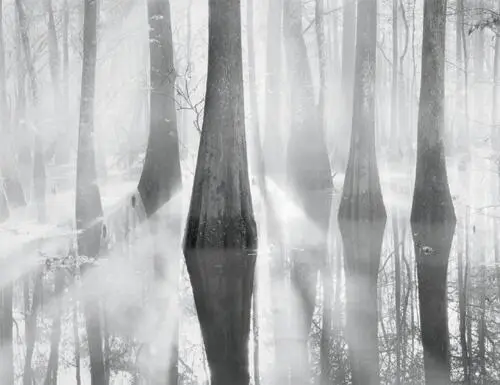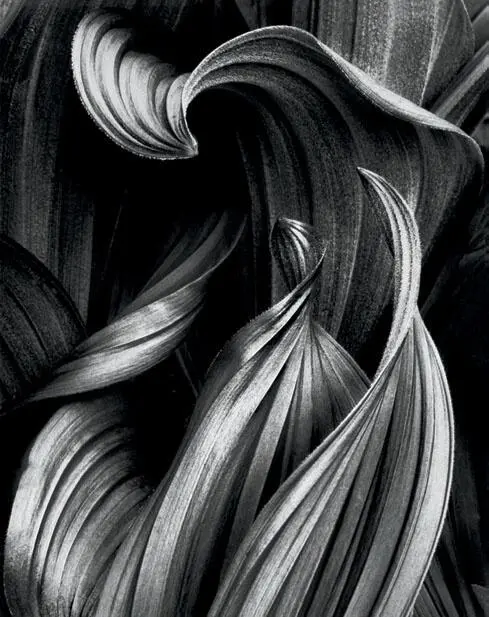Bruce Barnbaum - The Art of Photography - An Approach to Personal Expression
Здесь есть возможность читать онлайн «Bruce Barnbaum - The Art of Photography - An Approach to Personal Expression» весь текст электронной книги совершенно бесплатно (целиком полную версию без сокращений). В некоторых случаях можно слушать аудио, скачать через торрент в формате fb2 и присутствует краткое содержание. Жанр: Старинная литература, на английском языке. Описание произведения, (предисловие) а так же отзывы посетителей доступны на портале библиотеки ЛибКат.
- Название:The Art of Photography: An Approach to Personal Expression
- Автор:
- Жанр:
- Год:неизвестен
- ISBN:нет данных
- Рейтинг книги:5 / 5. Голосов: 1
-
Избранное:Добавить в избранное
- Отзывы:
-
Ваша оценка:
- 100
- 1
- 2
- 3
- 4
- 5
The Art of Photography: An Approach to Personal Expression: краткое содержание, описание и аннотация
Предлагаем к чтению аннотацию, описание, краткое содержание или предисловие (зависит от того, что написал сам автор книги «The Art of Photography: An Approach to Personal Expression»). Если вы не нашли необходимую информацию о книге — напишите в комментариях, мы постараемся отыскать её.
The Art of Photography: An Approach to Personal Expression — читать онлайн бесплатно полную книгу (весь текст) целиком
Ниже представлен текст книги, разбитый по страницам. Система сохранения места последней прочитанной страницы, позволяет с удобством читать онлайн бесплатно книгу «The Art of Photography: An Approach to Personal Expression», без необходимости каждый раз заново искать на чём Вы остановились. Поставьте закладку, и сможете в любой момент перейти на страницу, на которой закончили чтение.
Интервал:
Закладка:
A photograph of the forest under such spotty conditions may look more like a pizza than a forest. The photographic situation no longer parallels the physical situation. The physical lines and forms of the forest are the same under cloudy or sunny conditions, but from the point of view of photography, everything has changed. Continuity has been lost. Light alone has made the difference. Light determines form (Figure 5-3).
Can you photograph a forest on a sunny day with any semblance of success, or is it just something that inevitably leads to failure? Of course you can, but you have to see (i.e., understand) exactly what the light is doing. One of the key strategies that I employ is backlighting, or photographing directly toward the sun, thus looking at the shaded side of the trees. With the sun coming toward me, the trees in front of me are completely in shade, with those slightly off to the sides are just edged by sunlight. This tends to make everything far more cohesive and controllable (Figure 5-1 and Figure 5-4). But, you might ask, won’t the contrast be excessive, making it impossible to photograph? No, not a bit, as Figure 5-1 and Figure 5-4 attest. (See Chapter 8, Chapter 9, and Chapter 11 to understand how to control such light.)
However, I also caution against using this suggestion of backlighting as a formula or rule to employ on sunny days. Backlighting is one strategy I employ in a forest on bright, sunny days, but it’s not the only one. What I recommend is looking carefully at the light and the forms as you walk through a forest, because all the right things may converge at some point to make an unlikely situation occur—such as an opening that allows cross light to shine on a group of trees exactly where you need it. Don’t discount that possibility, for it can happen.

Using the same basic approach to bright, harsh sunlight in a forest as in Figure 5-1, I aimed my camera directly toward the sun, using a foreground tree to block it out. On a very cold December morning, with fog steaming up from the sunlit swamp, I placed the darkest shadows high on the exposure scale. This allowed me to convey the magical feeling of light emanating from everything in the scene.
Figure 5-4. Altamaha Cypress Swamp, Sunrise

Made in late afternoon under the shadow of a nearby mountain, this image captured a ballet-like feeling in the twisting corn lily leaves and a protective or warm feeling in the leaf sheltering them. No shadows broke up the graceful forms, allowing uninterrupted visibility.
Figure 5-5. Dance of the Corn Lily
It has been my observation over 35 years of teaching that most beginners—as well as many experienced photographers—look at objects, not light. Furthermore, most photographers tend to avoid soft, even light because of their belief that such light produces flat, bland photographs. This common perception is simply untrue. Soft light eliminates sudden breaks of tonality, but contrast can always be increased via a variety of photographic controls. Especially in close-up scenes, soft light is often the only usable light, for it is the only one that can be fully controlled (Figure 5-5). Soft light implies continuity of form, but it does not imply or impose blandness.
Just as the lines of branches are disrupted by strong directional lighting (such as sunlight), shapes of objects can be similarly altered. Consider an architectural subject like a modern office building. Its straight, clean, rectangular facade can be changed by the shadow of a nearby building falling diagonally across it. Instead of a rectangular array of windows, there could be two triangular areas of windows: one shaded, one sunlit. Physically, the building is still rectangular; photographically, it is a pair of triangles (Figure 5-6). As always, this is not necessarily undesirable or wrong. This effect may be your intent. Just be aware of the effect created by the light, so you can use it for your interpretive ends. As stated near the beginning of this chapter, observe how the light is distributed before looking at the physical entity of the building.
As you grow to notice the visual changes objects assume under varied lighting conditions, you will become aware of how each type of light affects your feelings about an object. It is surprising how much more deeply you will understand the essence of things by studying the light that falls upon each one. You will discover changes of meaning with every change in lighting. This will reveal ways to interpret those objects most appropriately for the message you wish to convey.
Types of Lighting/Quality of Light
You can best understand light by categorizing the infinite variety of lighting into a few distinct types. Directional and non-directional light can be the two major categories. Let’s see how to work with both of them outdoors and indoors, starting with outdoor lighting.
Outdoors, sunny weather provides directional light, as do dawn and dusk light from the east or west. Yet there is a difference between sunlight and dawn or dusk light (before sunrise or after sunset), both of which are devoid of the deep shadows associated with sunlit conditions. Overcast weather provides nondirectional light, though early morning or late afternoon hazy (shadowless) clouds may be softly directional. Directional light can be broken down into cross lighting (light directed from the side), axis lighting (light from behind the camera), and backlighting (light from behind the subject). Each of these categories merges gradually into the next, but each has its own unique character, its own quality.
For any outdoor photograph, it is worthwhile to quickly compare the current lighting situation versus other possibilities, in order to envision how the same scene may differ and perhaps improve under alternate conditions. Under partly cloudy conditions, see if spotty sunlight highlights the important areas of the scene, or if a change in the cloud positions would better highlight those areas. If so, wait for the desired situation (and hope that it will occur!). It may be worthwhile to make several exposures as conditions change, subsequently choosing the best of the lot as your photograph. On the other hand, additional thought may indicate that full sunlight or full shade would better reveal the scene. If so, save yourself some useless exposures and return when better conditions prevail.

Amidst the Dallas skyscrapers, this spiral monument was edge-lit by the sun. A diagonal shadow across the building behind the monument (which came from a building to the right, out of the frame) created compositional interest, far better than if everything had been in sunlight or shade. Note the tones of the monument against those of the buildings behind.
Figure 5-6. Thanksgiving Square, Dallas
Consider, for example, the various types of lighting on a panoramic mountain landscape. Under clouds, the mountains could be a mass of mid-gray tones with little delineation of internal structure, while the cloudy sky—the source of light—would be a nearly featureless light gray. It may prove to be a dreadfully dull photograph, despite the spectacular mountains.
With axis light and a deep blue sky, the mountains may appear brighter than the sky. But lacking shadows, the crags and crevices of the mountains would be invisible. The scene could still be photographically dull. Backlighting could make the peaks stand out in silhouette against the bright sky, but again, the slopes and buttresses below could be featureless, with no light and no life photographically. Strong cross lighting could bring out each pinnacle and buttress in bold relief, and the photograph could begin to have real excitement and vibrancy.
Читать дальшеИнтервал:
Закладка:
Похожие книги на «The Art of Photography: An Approach to Personal Expression»
Представляем Вашему вниманию похожие книги на «The Art of Photography: An Approach to Personal Expression» списком для выбора. Мы отобрали схожую по названию и смыслу литературу в надежде предоставить читателям больше вариантов отыскать новые, интересные, ещё непрочитанные произведения.
Обсуждение, отзывы о книге «The Art of Photography: An Approach to Personal Expression» и просто собственные мнения читателей. Оставьте ваши комментарии, напишите, что Вы думаете о произведении, его смысле или главных героях. Укажите что конкретно понравилось, а что нет, и почему Вы так считаете.












